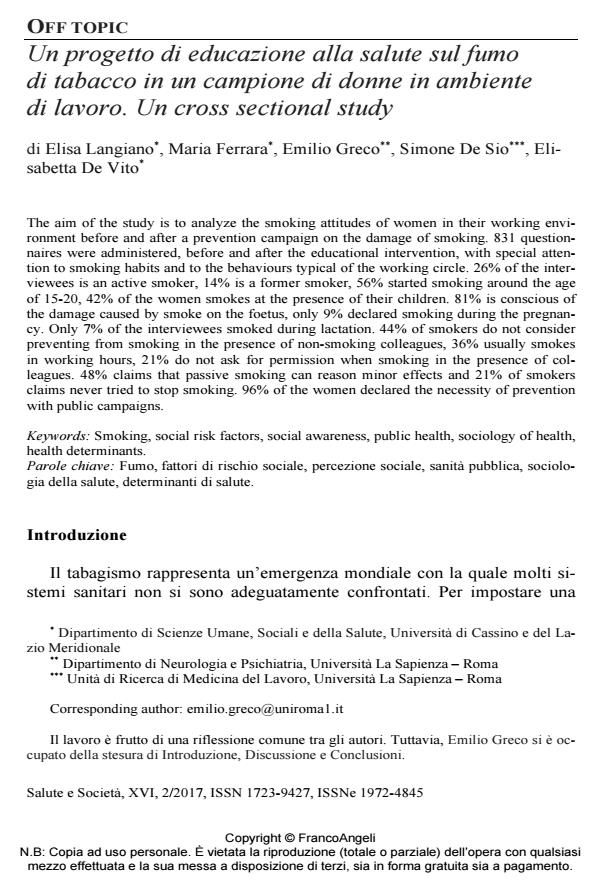Un progetto di educazione alla salute sul fumo di tabacco in un campione di donne in ambiente di lavoro. Un cross sectional study
Journal title SALUTE E SOCIETÀ
Author/s Elisa Langiano, Maria Ferrara, Emilio Greco, Simone De Sio, Elisabetta De Vito
Publishing Year 2017 Issue 2017/2
Language Italian Pages 14 P. 135-148 File size 90 KB
DOI 10.3280/SES2017-002010
DOI is like a bar code for intellectual property: to have more infomation
click here
Below, you can see the article first page
If you want to buy this article in PDF format, you can do it, following the instructions to buy download credits

FrancoAngeli is member of Publishers International Linking Association, Inc (PILA), a not-for-profit association which run the CrossRef service enabling links to and from online scholarly content.
The aim of the study is to analyze the smoking attitudes of women in their working envi-ronment before and after a prevention campaign on the damage of smoking. 831 question-naires were administered, before and after the educational intervention, with special attention to smoking habits and to the behaviours typical of the working circle. 26% of the interviewees is an active smoker, 14% is a former smoker, 56% started smoking around the age of 15-20, 42% of the women smokes at the presence of their children. 81% is conscious of the damage caused by smoke on the foetus, only 9% declared smoking during the pregnancy. Only 7% of the interviewees smoked during lactation. 44% of smokers do not consider preventing from smoking in the presence of non-smoking colleagues, 36% usually smokes in working hours, 21% do not ask for permission when smoking in the presence of colleagues. 48% claims that passive smoking can reason minor effects and 21% of smokers claims never tried to stop smoking. 96% of the women declared the necessity of prevention with public campaigns.
Keywords: Smoking, social risk factors, social awareness, public health, sociology of health, health determinants.
Elisa Langiano, Maria Ferrara, Emilio Greco, Simone De Sio, Elisabetta De Vito, Un progetto di educazione alla salute sul fumo di tabacco in un campione di donne in ambiente di lavoro. Un cross sectional study in "SALUTE E SOCIETÀ" 2/2017, pp 135-148, DOI: 10.3280/SES2017-002010